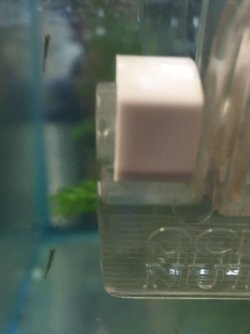It is going to take at least 3 weeks before any infusoria appears in water containing rotting plant matter. Do not waste your time putting plant leaves in a rearing container for this purpose because they only add ammonia to the water and there will be enough of that from the food.
If you are making an infusoria culture, think of it along the lines of cycling an aquarium. In an aquarium it takes a couple of weeks for the first colonies of filter bacteria to appear in the water and build up in sufficient numbers to get rid of the ammonia and convert it into nitrite.
With infusoria it takes a few weeks for bacteria to build up in the water and start breaking down the plants leaves. If the leaves are crushed up or cut into small pieces they break down faster, but it still takes a couple of weeks for the bacteria to build up in numbers.
Back to the filter...Once the first colonies of beneficial filter bacteria have built up in sufficient numbers, you get new bacteria growing in the filter and these break down nitrite into nitrate. These new bacteria take a few weeks to build up in numbers before they can convert the nitrite into nitrate.
With infusoria cultures, the bacteria take a couple of weeks to build up in numbers and then it takes several more weeks for the infusoria (normally paramecium) to arrive in the water and start to grow. The infusoria eat the bacteria and gradually build up in numbers.
So you need the plant matter to break down, the bacteria to build up, the paramecium to arrive and grow, and then after about 1 month you have a decent amount of infusoria.
------------------------
If you are losing fry, they are either starving or dying from poor water quality.
You should have a small air operated, established sponge filter in the rearing container to help keep the water clean. If you don't have a filter then make sure there is an airstone and change at least half (preferably 3/4) of the water every day. Refill the rearing container with water from the breeding tank.
Because the fish are dying, I would drain most of the water out and replace it now. I would drain it again in 12 hours time and refill it. Then I would do a 50-75% water change each day.
Use a piece of air line and syphon the water out of the rearing container into a white bucket so you can check it for fry. If there are any fry in the white bucket, use a small plastic container to scoop them out and put them back into the rearing container.
Once you have drained out most of the water, uneaten food, fish waste and dead fish from the bottom, refill the rearing tank.
------------------------
If you are adding new food, make sure you continue to feed the old food for at least 1 week after the new food has been added to make sure all the fish are eating the new food.




